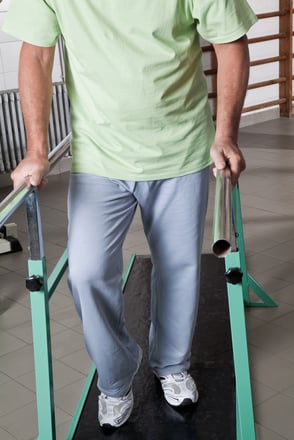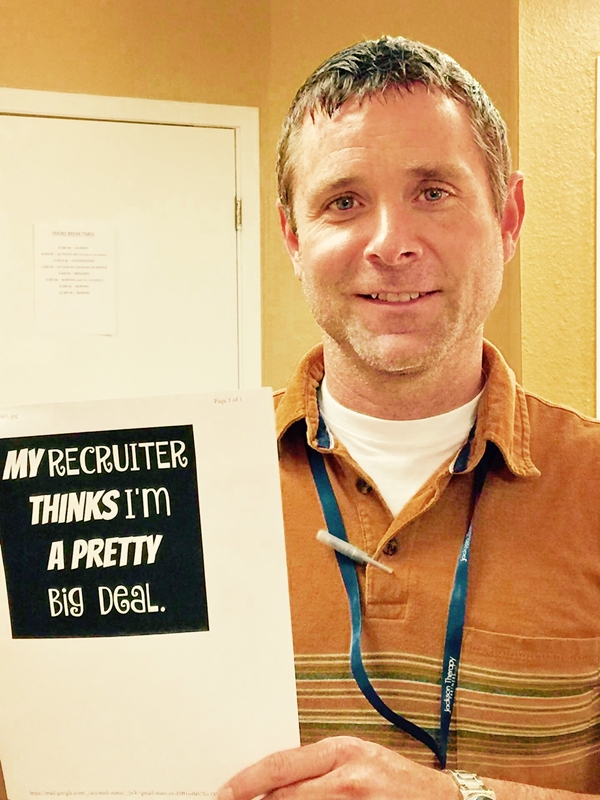- Help Center
-
1-800-774-7785Login

Blog
Case Study: How a Travel PTA helped a patient walk again

Zach, a physical therapist’s assistant currently on assignment in San Angelo, Texas, loves helping patients. When Zach first became a physical therapist’s assistant in 2009, he began his career as a Traveling PTA. It gave him the opportunity to pursue his passion, while also offering more employment options with benefits and giving him the ability to see different parts of the country. He joined Jackson Therapy in 2016 after partnering with Katie his recruiter, and began assisting patients in Texas in a nursing facility.
In this facility, Zach focused on geriatric patients, which presented some challenges – as their age made it more difficult for them to progress past an injury. Their slow progress can depress morale and cause patients to lose motivation. When they don’t believe in themselves, they heal at a slower rate.
Building hope, one step at a time
When Zach was first paired with a military veteran and ex-sniper who was bound to a wheelchair, he immediately realized this patient felt completely defeated and didn’t believe he could walk again. Other physical therapists had given up on this veteran, but Zach was willing to try again.
When he began working with his patient, Zach was encouraged when he saw that the vet was willing to work hard and complete his at-home exercises. This meant that Zach could focus on more strenuous exercises during the veteran’s 25-minute sessions and offer him self-directed exercises as homework.
“The amount of active participation makes a big difference,” Zach noted.
Zach believed that his patient could walk – but it would take multiple phases. When describing his role, Zach noted that he is “part cheerleader, part motivator.” His job was to keep morale high as the veteran started building up his strength again.

Focus on small wins first
First, Zach focused on increasing the vet’s core strength and built his ability to control his motions. While some of his muscles had atrophied from lack of use, others had lost the connection to the brain that could communicate different signals. Many of these exercises focused on reestablishing this neurological connection. Zach helped the veteran build his trunk muscle strength with sitting exercises, focusing on posture. Once he saw progress, Zach incorporated exercises that reduced the veteran’s ataxic movements and built up his fine motor skills. The key, he noted, was Frenkel exercises, or small, repeated movements to build coordination.
Weeks went by and they kept working. The veteran completed his at-home exercises and began seeing improvement in his core strength and gaining more control over his lower extremities.
Zach wanted to get the veteran to stand. By focusing on standing alone, the veteran wouldn’t overtax his muscles by trying to walk too quickly. Zach would have the veteran stand for a few minutes at a time. This gave him the chance to engage his core without overexerting himself.
Finally, after eight years of not walking and months of hard work, the vet was able to walk five feet – a monumental feat for someone who thought he wouldn’t be able to walk again. A few weeks later, the vet extended his reach to ten feet.
Zach believed that ankle foot orthosis, which can control and support weak ankles, could assist the veteran in his recovery. Zach believed that incorporating parallel bars, which give the veteran something to hold on to, could extend his walking ability.
Working in physical therapy gives individuals the chance to make a difference in the lives of their patients. Because of therapists like Zach, millions of patients every year regain their quality of life through Physical Therapy.
Read More Articles Like This
Latest Articles
- The Impact of Traveling Therapists in Underserved Communities
- Kick Off the New Year with a New Adventure as a Traveling Therapist
- More Than Travel: How We Help Therapists Find the Right Full-Time Fit
- Level Up Your Life as a Travel Therapist in 2026
- Explore More and Grow More in Your 30s as a Travel Therapist
